 W
WDuring the American Civil War (1861–1865)cap, Maryland, a slave state, was one of the border states, straddling the South and North. Despite some popular support for the cause of the Confederate States of America, Maryland would not secede during the Civil War. Because the state bordered the District of Columbia and the strong desire of the opposing factions within the state to sway public opinion towards their respective causes, Maryland played an important role in the war. Newly elected 16th President Abraham Lincoln, suspended the constitutional right of habeas corpus from Washington DC to Philadelphia, PA; and he dismissed Chief Justice Roger B. Taney of the U.S. Supreme Court's "Ex parte Merryman" decision in 1861 concerning freeing John Merryman, a prominent Southern sympathizer from Baltimore County arrested by the military and held in Fort McHenry. The Chief Justice had held that the suspension was unconstitutional and could only be done by Congress and would leave lasting civil and legal scars. The decision was filed in the U.S. Circuit Court for Maryland by Chief Justice Roger Brooke Taney, a Marylander from Frederick and former member of the administration of the seventh President Andrew Jackson, who had nominated him two decades earlier.
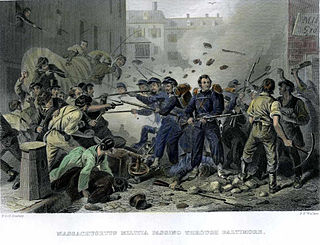 W
WThe Baltimore riot of 1861 was a civil conflict on Friday, April 19, 1861, on Pratt Street, in Baltimore, Maryland. It occurred between antiwar "Copperhead" Democrats and other Southern/Confederate sympathizers on one side, and on the other, members of Massachusetts and Pennsylvania state militia regiments en route to the national capital at Washington who had been called up for federal service. The fighting began at the President Street Station, spreading throughout President Street and subsequently to Howard Street, where it ended at the Camden Street Station. The riot produced the first deaths by hostile action in the American Civil War and is nicknamed the "First Bloodshed of the Civil War".
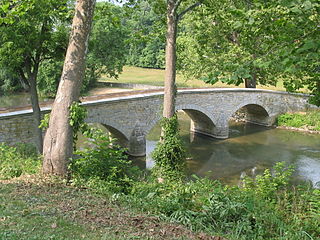 W
WBurnside's Bridge is a landmark on the Civil War Antietam National Battlefield near Sharpsburg, northwestern Maryland.
 W
WUSS Constellation is a sloop-of-war, the last sail-only warship designed and built by the United States Navy. She was built at the Gosport Shipyard between 1853 and 1855 and was named for the earlier frigate of the same name that had been broken up in 1853. The sloop's primary armament was 8-inch (203 mm) shell-firing guns and four 32-pounder long guns, though she carried other guns as well, including two Parrott rifle chase guns. Constellation's career as a front-line unit was relatively short; after entering service in 1855, she served with the Mediterranean Squadron until 1858, and in 1859, she was assigned as the flagship of the Africa Squadron, where she served with the African Slave Trade Patrol. During the American Civil War (1861–1865), the ship returned to the Mediterranean to patrol for Confederate vessels. In late 1864, she returned to the United States to be decommissioned, as most of her crews' enlistments had expired. She spent the rest of the war out of service.
 W
WThe Eastern Theater of the American Civil War consisted of the major military and naval operations in the states of Virginia, West Virginia, Maryland, and Pennsylvania, the District of Columbia, and the coastal fortifications and seaports of North Carolina.
 W
WEx parte Merryman, 17 F. Cas. 144 (No. 9487), is a well-known and controversial U.S. federal court case that arose out of the American Civil War. It was a test of the authority of the President to suspend "the privilege of the writ of habeas corpus" under the Constitution's Suspension Clause, when Congress was in recess and therefore unavailable to do so itself. More generally, the case raised questions about the ability of the executive branch to decline enforcement of judicial decisions when the executive believes them to be erroneous and harmful to its own legal powers.
 W
WFort Marshall was a historical American coastal four-point bastion fort located in what is now the Highlandtown and Canton neighborhoods of Baltimore, Maryland. It was built at the outset the American Civil War in 1861, to protect the eastern approaches of Baltimore from Confederate attacks. The fort remained garrisoned for the duration of the war. After 1866, the fort's buildings were salvaged for other purposes and the area ultimately became the site of the Sacred Heart of Jesus Roman Catholic Church, surrounded by the developing residential neighborhoods of southeast Baltimore.
 W
WFort McHenry is a historical American coastal pentagonal bastion fort on Locust Point, now a neighborhood of Baltimore, Maryland. It is best known for its role in the War of 1812, when it successfully defended Baltimore Harbor from an attack by the British navy from the Chesapeake Bay on September 13–14, 1814. It was first built in 1798 and was used continuously by the U.S. armed forces through World War I and by the Coast Guard in World War II. It was designated a national park in 1925, and in 1939 was redesignated a "National Monument and Historic Shrine".
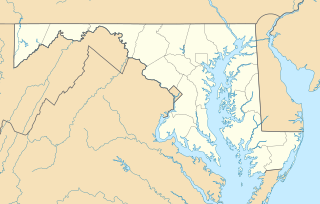 W
WHarney is an unincorporated community in Carroll County, Maryland, United States. Harney is also the home of the 'World's Best Carnival'.
 W
WHessian Barracks, formerly known as Frederick Barracks, is an historic barracks building located in Frederick, Maryland. The State of Maryland contracted to build a barracks in the summer of 1777, but it was not completed until 1781. There were two L-shaped buildings built on the site, but one was demolished in 1871. The building is a two-story stone structure with gallery porches and a gable roof. Hessian Barracks was listed on the National Register of Historic Places in 1971.
 W
WSt. Mary's College of Maryland, originally known as St. Mary's Female Seminary, began in 1840 as a secular state-sponsored boarding school for women. Since 1966 it has been a four-year public liberal arts college. Since 1992 it has been a designated public honors college. One of only two in the nation to hold such a distinction at the time.
 W
WLansdowne Christian Church was established in 1903 in Lansdowne, Maryland. Part of the Disciples of Christ denomination, Lansdowne Christian Church is located at 101 Clyde Avenue, Baltimore, Maryland 21227. Reverend J. B. DeHoff was the first pastor. The church is currently led by Reverend Trent Owings.
 W
WLoudon Park Cemetery is a historic cemetery in Baltimore, Maryland. It was incorporated on January 27, 1853, on 100 acres (40 ha) of the site of the "Loudon" estate, previously owned by James Carey, a local merchant and politician. The entrance to the cemetery is located at 3620 Wilkens Avenue.
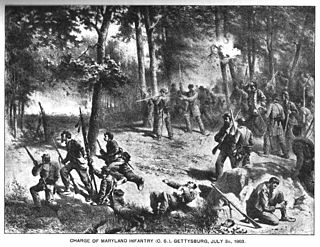 W
WThe Maryland Line in the Army of the Confederate States of America was made up of volunteers from Maryland who, despite their home state remaining in the Union, fought for the Confederate States of America during the American Civil War. Of approximately 25,000 Marylanders who volunteered, most fought in the Army of Northern Virginia, and it was not until late in 1863 that a Maryland Line in the CSA was formally created. However, by this late stage in the war, few men wished to leave the units they had fought alongside for more than two years, and the exiles' dream of an independent Maryland Line in the Confederate army would never be fully realized.
 W
W"Maryland, My Maryland" was the state song of the U.S. state of Maryland from 1939 to 2021. The song is set to the melody of "Lauriger Horatius" — the same tune "O Tannenbaum" was taken from. The lyrics are from a nine-stanza poem written by James Ryder Randall (1839–1908) in 1861. The state's general assembly adopted "Maryland, My Maryland" as the state song on April 29, 1939. After more than ten attempts to change the state song, over 40 years, on March 22, 2021, both houses of the General Assembly voted by substantial margins to abandon "Maryland, My Maryland" as the state song without a replacement. On May 18, 2021, Governor Larry Hogan signed the bill.
 W
WThe Mason–Dixon line, also called the Mason and Dixon line or Mason's and Dixon's line, is a demarcation line separating four U.S. states, forming part of the borders of Pennsylvania, Maryland, Delaware, and West Virginia. Historically, it came to be seen as demarcating the North from the South in the U.S. It was surveyed between 1763 and 1767 by Charles Mason and Jeremiah Dixon in the resolution of a border dispute involving Maryland, Pennsylvania, and Delaware in Colonial America. The dispute had its origins almost a century earlier in the somewhat confusing proprietary grants by King Charles I to Lord Baltimore (Maryland) and by King Charles II to William Penn.
 W
WMiller's Cornfield, is a section of the Antietam battlefield of the American Civil War.
 W
WThe Battle of Monocacy was fought on July 9, 1864, approximately 6 miles (9.7 km) from Frederick, Maryland, as part of the Valley Campaigns of 1864 during the American Civil War. Confederate forces under Lt. Gen. Jubal A. Early defeated Union forces under Maj. Gen. Lew Wallace. The battle was part of Early's raid through the Shenandoah Valley and into Maryland in an attempt to divert Union forces away from Gen. Robert E. Lee's army under siege at Petersburg, Virginia.
 W
WMonocacy National Battlefield is a unit of the National Park Service, the site of the Battle of Monocacy in the American Civil War fought on July 9, 1864. The battlefield straddles the Monocacy River southeast of the city of Frederick, Maryland. The battle, labeled "The Battle That Saved Washington," was one of the last the Confederates would carry out in Union territory. The two opposing leaders were General Jubal Early, fighting for the South, and General Lew Wallace, fighting for the North.
 W
WThe National Museum of Civil War Medicine is a U.S. historic education institution located in Frederick, Maryland. Its focus involves the medical, surgical and nursing practices during the American Civil War (1861-1865).
 W
WPoint Lookout State Park is a public recreation area and historic preserve occupying Point Lookout, the southernmost tip of a peninsula formed by the confluence of Chesapeake Bay and the Potomac River in St. Mary's County, Maryland. The state park preserves the site of an American Civil War prisoner of war camp and the Point Lookout Light, which was built in 1830. It is the southernmost spot on Maryland's western shore, the coastal region on the western side of the Chesapeake Bay.
 W
WThe President Street Station in Baltimore, Maryland, is a former train station and railroad terminal. Built in 1849 and opened in February 1850, the station saw some of the earliest bloodshed of the American Civil War (1861-1865), and was an important rail link during the conflict. Today, it is the oldest surviving big-city railroad terminal in the United States. A preservation campaign and renovation project completed in 1997 enabled the station to be operated as the Baltimore Civil War Museum for several years. The museum is temporarily closed as of early 2021.
 W
WRich Hill, near Bel Alton, Maryland, was owned by Colonel Samuel Cox, a Confederate sympathizer during the American Civil War. Following the assassination of President Abraham Lincoln on April 14, 1865, Cox hid assassin John Wilkes Booth and his companion, David Herold, in a swamp near Rich Hill. Booth and Herold left the property on April 21, crossing the Potomac River in a small boat.
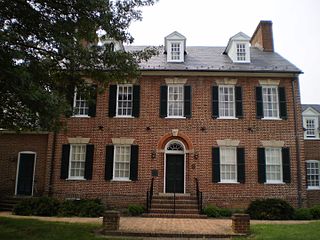 W
WThe Rossborough Inn is a historic building facing Baltimore Avenue/United States Route 1 on the eastern edge of the campus of the University of Maryland at College Park. Construction on the building began in 1798 and was completed in 1812, making it the oldest building on campus and the oldest building in the adjoining town of the City of College Park. It is built in the Federal style. The lower wings were added in 1938, as part of extensive renovations. The Rossborough Inn is listed as a historic site by the Maryland-National Capital Park and Planning Commission.
 W
WThe Henry Shoemaker Farmhouse is a circa 1810 Federal style farmhouse which was involved in the Battle of South Mountain in 1862. Located near the eastern end of Turner's Gap, the house was the center of a Union encampment and served as a field hospital.
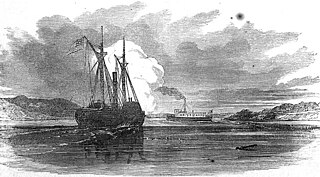 W
WCSS Teaser had been the aging Georgetown, D.C. tugboat York River until the beginning of the American Civil War, when she was taken into the Confederate States Navy and took part in the famous Battle of Hampton Roads. Later, she was captured by the United States Navy and became the first USS Teaser.